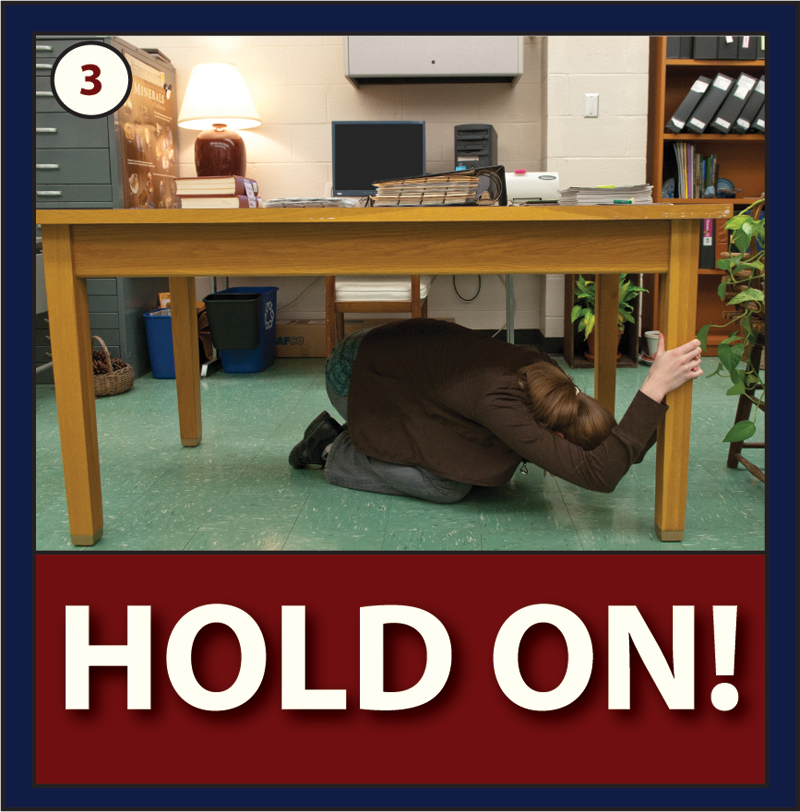Earthquakes occur without warning and don't allow much time for citizens to react. Studies show that you are more likely to be injured by falling or shifting objects than to die in a collapsed building. Practice "Drop, Cover, and Hold On!" so that the response is automatic when shaking begins.

Do not wait to determine the strength of an earthquake. DROP down onto your hands and knees.
If you are in bed, stay there and cover your head with a pillow. If you are driving, pull over to the side of the road, stop, and set the parking break. Stay in your vehicle until the shaking has stopped.

Take COVER by crawling under a sturdy table or other piece of furniture. If space is limited, your head and neck should receive first priority. The bases of interior walls are a second option if a table or desk is not available. Do not run outside or relocate to a doorway.

HOLD ON to the middle of the table leg and cover your head and neck until the shaking stops. Expect the furniture to move during an earthquake. Be prepared to move with the furniture that is covering your body. When the shaking stops, carefully evacuate the building.
If an ideal piece of furniture is not available when shaking begins, protect your body by taking cover in the following ways:

If your entire body does not fit underneath the furniture, cover as much of your body as possible with priority given to your head and neck. Hold on until the shaking stops. When the shaking stops, carefully evacuate the building.

If no furniture is available when shaking begins, drop to the ground in an interior hallway. Stay clear of windows and exterior doorways, as these are very dangerous areas during an earthquake. Cover your head and neck with your arms and hold on until the shaking stops.
When the shaking stops, carefully evacuate the building.
Avoid these potentially fatal mistakes:
- Do not run outside or to another room. Exterior walls are the most dangerous areas of your home.
- Do not stand in or take cover near a doorway. Modern constructed doorways are no safer than other areas of your home.
- Ignore the practice of using the "Triangle of Life" suggestions. In the U.S., strict building codes have decreased the potential of buildings collapsing during an earthquake. Assumptions made in this practice are incorrect and increase the risk of injuries and death.


